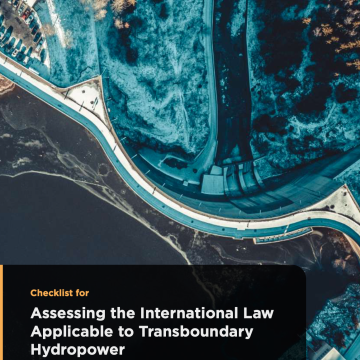Resources
Assessing international law applicable to transboundary waters
The International Renewable Energy Agency estimates that the shift away from fossil fuels towards ‘net Zero’ requires a 25% increase in hydropower capacity by 2030, and a 60% increase by 2050.
Renewable energy, including hydropower, is also key to progressing many of the Sustainable Development Goals (SDGs). Approximately 70% of planned or under construction hydropower projects are on transboundary rivers, i.e., those shared by two or more countries.
These projects raise serious questions over how the costs and benefits of hydropower development should be equitably shared across borders. Africa and the Himalayas are highlighted as key regions for transboundary hydropower expansion, while in other regions hydropower potential has been identified in key transboundary basins, such as the Amazon River.
An added complexity to these projects is that their financing, planning, construction and operation may involve not only riparian countries, but also foreign investors. For example, China has participated as contractor, financier or developer in approximately 280 hydropower projects in South-east Asia, and Chinese entities have invested approximately 15 billion USD in various hydropower and related projects in 20 African countries.
Hydropower projects on transboundary rivers (or transboundary hydropower projects) can result in a multitude of benefits. These benefits are illustrated through examples such as the way in which Canada and the United States of America share the Columbia River, or Guinea, Mali, Mauritania, and Senegal share the Senegal River. However, the development of hydropower may also result in negative externalities to both communities and the environment.
Weighing both the benefits and costs of hydropower developments on transboundary waters needs careful consideration on the basis of international law. Any benefits must be equitably shared, and any impacts carefully assessed, and where possible mitigated or avoided.
